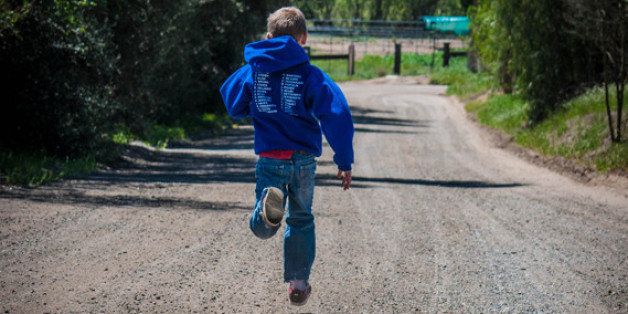
When you're the parent of a child on the autism spectrum, you're used to your child moving, but often in a manner that may not be in synch with the rest of society. In this special world, there are arm-flappers and toe-dancers and body rockers, among others.
I have a sprinter.
My son, who is now 14 years old, technically hits some end of the autism spectrum, with the old classification of Asperger's Syndrome probably being the closest label that could fit my brilliant, quirky young man.
During almost his entire life, my Aspie has sprinted instead of walked. Sometimes, I think he was been born sprinting and his crawling is part of my imagination, some fanciful dream implanted in my mind to make me believe I have what some people still refer to as a "normal" child.
My son runs from car to school, from class to class, from our house to the car -- anywhere he needs to go. He used to sprint home a mile from school every day. The townspeople in our little village could set their watches by the redhead zooming down the sidewalks on weekday afternoons. Well, unless he was engrossed in a fantasy novel. Then he could walk and read all the way home. See, my son can walk if he has to, but that's not his first impulse.
I decided long ago not to mind his need for speed. Something about the movement itself feels good to him, so I let him go. I once asked him why he sprints everywhere and he simply said, "I just like to be quick."
It wasn't always this way. The sprinting used to be dangerous when it came from anxiety. Those early grade school teachers needed to be part therapist, part Usain Bolt. Because my son would bolt. The wrong assignment, the wrong page, the wrong look, the wrong word and he was out of there, running, sprinting the halls until he found someplace to hide and calm down.
Once, it took 40 minutes before they found him under a desk in the darkened computer lab, just breathing and listening to the hum of the machines. There he felt safe. But meanwhile the rest of the school was on lockdown. Eventually he matured and some teachers got wise. Once when he bolted, a teacher simply yelled after him, "I'm too old to chase you. Just stop." And he did.
Movement is a blessing and a curse to kids like mine.
My son wants to move, feels compelled to move, but because his limbs and fingers and toes don't work in perfect unison with what he sees in his brain, the result of movement is often frustration.
So when author John Ratey ("Spark") talks in "Rewired by the WOD" about the importance of training autistic children "to teach them coordination," I think, "Yes! This could help my son." When Ratey says, "They are very uncoordinated, that's a big problem: Their cerebellums are off. But you can train the cerebellum," I think "Hooray!" This sounds like what my son needs, and other kids like him. Maybe the cerebellum does hold the key to improving their movement, and maybe that leads to improving their lives. It's worth a try.
If there's one thing you learn as the parent of a child on the spectrum, it's to cling to hope. You also learn to try everything and anything that might help your kid.
I sat in an Individualized Education Program (IEP) meeting one day and jumped out of my chair to demonstrate burpees to two teachers, a psychologist and the school principal. My son needed something to do when the anxiety started to rise and his breathing became shallow and his hands started to clench. Some movement to help him calm down, breathe through the fear and quell the urge to run. We came up with burpees. His team watched and then wrote burpees into his program. Any time he felt anxious, my son was allowed to give a hand signal to the teacher and step outside the classroom door to do five burpees in the hallway. A perfect solution? No. But it was something.
Now he's in the eighth grade and doesn't want to leave the classroom for burpees. But he needs more physical activity to help settle his body and his brain. He's still not that interested in CrossFit ("Oh, please. That's what my mother does.") but I'll be signing him up for CrossFit classes again.
I figure he should like the sprints.
This post originally appeared in the CrossFit Journal on April 26, 2014.
All images are Danell Marks/CrossFit, Inc.
